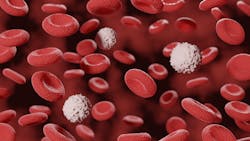New studies analyze CLABSI in home infusion therapy
According to a new report related to home infusion CLABSI surveillance, barriers for home infusion therapy central line associated bloodstream infection (CLABSI) surveillance have not been elucidated and are needed to identify how to support home infusion CLABSI surveillance.
The researchers from Johns Hopkins Bloomberg School of Public Health, in Baltimore, MD, aimed to (1) perform a goal-directed task analysis of home infusion CLABSI surveillance, and (2) describe barriers to, facilitators for, and suggested strategies for successful home infusion CLABSI surveillance according to a new report from the National Institutes of Health (NIH).
Staff performing home infusion CLABSI surveillance need health system resources, particularly leadership and front-line engagement, access to data, information technology support, training, dedicated time, and reports to perform tasks.
Interviews with team members involved in CLABSI surveillance at 5 large home infusion agencies were conducted to explore work systems used by members of the agency for home infusion CLABSI surveillance.
Twenty-one interviews revealed 8 steps for performing CLABSI surveillance in home infusion therapy. Major barriers identified included the need for training of the surveillance staff, lack of a standardized definition, inadequate information technology support, struggles communicating with hospitals, inadequate time, and insufficient clinician engagement and leadership support.
The researchers concluded that building home infusion CLABSI surveillance programs will require support from home infusion leadership.
